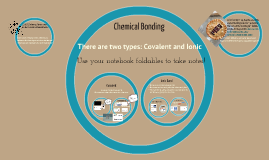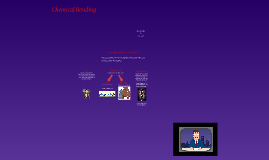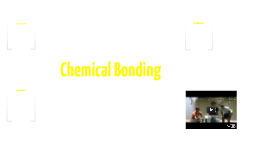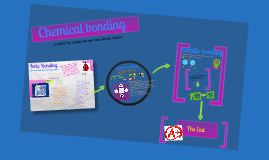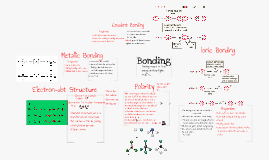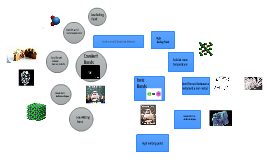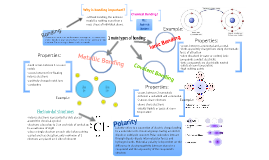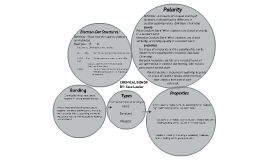Chemical Bonding
Transcript: . Ionic . (molecules) - . Nonpolar molecules: contain one nonpolar bond, or are symmetrical in electron dot formula, with no lone pairs areund central atom Ionic: Metal+Nonmetal, Conducts electricity (when melted), high meltin/boiling points, soluble in water . the shape of a molecule and the polarity of its bonds determine the polarity of the molecule (306 Basic Chemistry) . . Nonpolar Covalant Bond: When electrons are shared similarily, and pretty equally in a covalant bond . . Polar molecule: Unbalanced negativity, depends on shape of electron groups around central atom, dipoles dont cancel each other out. . Polar Covalant Bond: When electrons are shared unevenly in a covalant bond . . . 2 Definition: Show how the valance electrons are distubted Examples: P B Why so important? Bonding keeps atoms together, therefore, allowing the universe to work properly. With out bonding, the world would be a mass of individual atoms floating out and about. Try Chemical Bonding with electron dots: CCl 18e- 1.) Find the number of valance electrons Cl-C-Cl 14e- 2.) Use the central atom in the middle, and subtract two electrons from each bond (one line= 2 electrons) Cl-C-Cl 3.) Distribute the rest of the electrons; if needed, use double or triple bonds to compensate Types . . . . Chemical Bonding: keeps atoms together in strong attractive forces. . definition- A measure of unequal sharing of electrons, indicated by the difference in electronegativity values (304 Basic Chemistry) Bonding CHEMICAL BONDS BY: Sara Lawler . . . Properties . Covalant Polarity Metallic: 2 Metals (or including a metalloid), Malleable, various melting points, good conductors Covalant: 2 Nonmetals, poor conductors of electricity, low melting/boiling points, soluble in nonpolar liquids Electron-Dot Structures: The three main types of bonding are: . (bonds) Metallic






